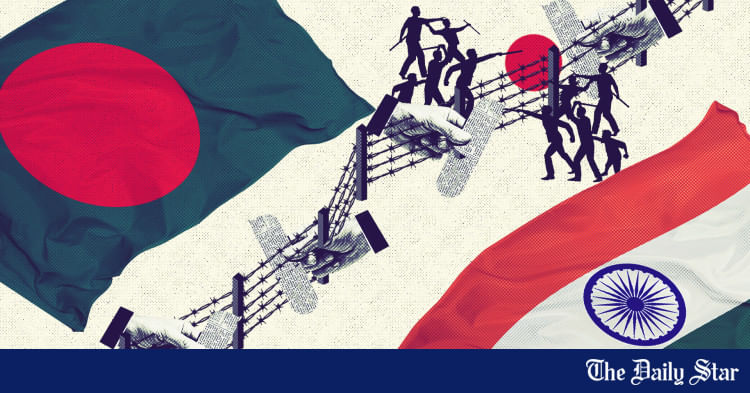Saif
Senior Member
- Joined
- Jan 24, 2024
- Messages
- 15,458
- Nation

- Axis Group


BNP will prioritise ending 'India's hegemony': Mirza Fakhrul
Bangladesh Nationalist Party (BNP) secretary general Mirza Fakhrul Islam Alamgir has said that if his party comes to power with the people’s mandate, it will place special priority to the issues of Farakka and the Teesta. He said they would stress on fair water sharing and border killings will...
BNP will prioritise ending 'India's hegemony': Mirza Fakhrul
Staff CorrespondentChapainawabganj
Published: 15 Nov 2025, 16: 27

BNP secretary general Mirza Fakhrul Islam Alamgir speaks to newspersons after paying visit to the rubber dam built over the Mahananda River in Chapainawabganj. Prothom Alo.
Bangladesh Nationalist Party (BNP) secretary general Mirza Fakhrul Islam Alamgir has said that if his party comes to power with the people’s mandate, it will place special priority to the issues of Farakka and the Teesta.
He said fair water sharing and border killings will receive greater emphasis, and the party will give stronger priority to stopping what he described as ‘India’s hegemony’ over Bangladesh.
The BNP secretary general made the remarks while speaking to newspersons following a visit to the rubber dam built over the Mahananda River in Chapainawabganj.
Mirza Fakhrul further said India is a neighbouring country and can easily maintain good relations with Bangladesh if it chooses to.
He added, “India helped during the 1971 Liberation War. They need to support Bangladesh much more. But unfortunately we have seen the opposite. The Modi government has pressured Bangladesh. They have taken everything and given us nothing.”
Mirza Fakhrul Islam Alamgir came to Chapainawabganj to join a public rally organised as part of the ‘Save Padma, Save the Country; Bangladesh First’ movement.
The rally will be held on Saturday afternoon at the grounds of Nawabganj Government College.
Staff CorrespondentChapainawabganj
Published: 15 Nov 2025, 16: 27
BNP secretary general Mirza Fakhrul Islam Alamgir speaks to newspersons after paying visit to the rubber dam built over the Mahananda River in Chapainawabganj. Prothom Alo.
Bangladesh Nationalist Party (BNP) secretary general Mirza Fakhrul Islam Alamgir has said that if his party comes to power with the people’s mandate, it will place special priority to the issues of Farakka and the Teesta.
He said fair water sharing and border killings will receive greater emphasis, and the party will give stronger priority to stopping what he described as ‘India’s hegemony’ over Bangladesh.
The BNP secretary general made the remarks while speaking to newspersons following a visit to the rubber dam built over the Mahananda River in Chapainawabganj.
Mirza Fakhrul further said India is a neighbouring country and can easily maintain good relations with Bangladesh if it chooses to.
He added, “India helped during the 1971 Liberation War. They need to support Bangladesh much more. But unfortunately we have seen the opposite. The Modi government has pressured Bangladesh. They have taken everything and given us nothing.”
Mirza Fakhrul Islam Alamgir came to Chapainawabganj to join a public rally organised as part of the ‘Save Padma, Save the Country; Bangladesh First’ movement.
The rally will be held on Saturday afternoon at the grounds of Nawabganj Government College.


































